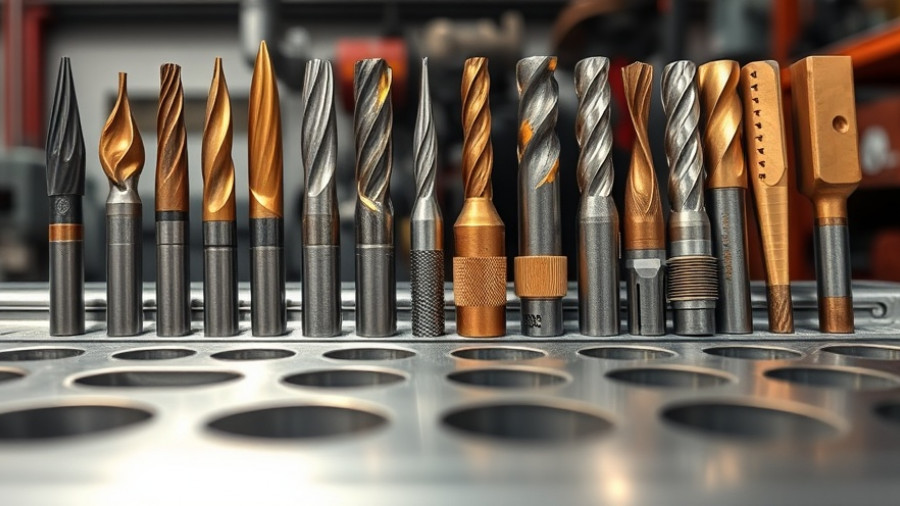
Revolutionizing Cutting Tool Life: Innovations for Modern Manufacturing
In today's competitive manufacturing landscape, extending cutting tool life is crucial not only for improving operational efficiency but also for reducing costs and minimizing environmental impact. Innovations like Kennametal’s KenDrill HPR and EMUGE-FRANKEN’s TiNox-Cut VAR end mills are paving the way for longer-lasting tools designed to handle tough materials while maintaining performance.
Understanding the Demand for Durable Cutting Tools
As industries such as aerospace, transportation, and energy work to enhance their production capabilities, the call for cutting tools that combine longevity and precision has never been louder. The longevity of a cutting tool directly impacts production costs, necessitating frequent replacements that can disrupt workflows. Thus, manufacturers are now focused on delivering tools that provide extended life spans, which not only minimize downtime but also contribute to sustainable practices.
Shapes and Coatings that Transform Tool Performance
Kennametal’s recent advancements in their KenDrill HPR lineup exemplify this shift. The introduction of the 12xD and 50xD solid carbide drills, enhanced by advanced geometries and high-performance coatings, marks a significant improvement over traditional drilling solutions. With features such as a 135° HPR point design and a patented KCK10A grade, these drills are engineered to withstand the rigors of today's drilling applications, providing a boost in performance across industries.
Case Study: EMUGE-FRANKEN’s TiNox-Cut VAR End Mills
The TiNox-Cut VAR end mills from EMUGE-FRANKEN shed light on application-specific innovations. These tools, designed for machining tough materials like Inconel and titanium, showcase how specialized tools can enhance metal removal rates while preserving tool life. The versatility offered by these end mills allows manufacturers to adapt to various applications seamlessly, marking a new standard for tool performance.
The Future of Cutting Tools: Balancing Innovation and Sustainability
As environmental concerns are increasingly acknowledged within the manufacturing sector, the focus is shifting towards sustainable practices. Innovations aimed at prolonging tool life inherently promote sustainability by reducing waste produced through frequent tool changes. When tools perform optimally over longer periods, the overall carbon footprint of production diminishes significantly. Companies that embrace such technological advancements not only enhance their productivity but also align with global sustainability goals.
Ultimately, the cutting tool innovations highlighted in this article reflect a significant evolution in manufacturing practices. As industries become more competitive, those investing in advanced tool technologies will likely see a measurable improvement in efficiency, cost savings, and sustainability.
Final Thoughts: Embrace the Change
For businesses engaged in construction, engineering, and architecture, the message is clear: embracing innovative cutting solutions is crucial for staying ahead in a rapidly evolving marketplace. Assess your current tool usage and consider how advanced designs and engineering techniques can align with your operational goals. By adapting to these changes, companies can not only improve their performance but also contribute positively to the environment.
 Add Row
Add Row  Add
Add 




Write A Comment